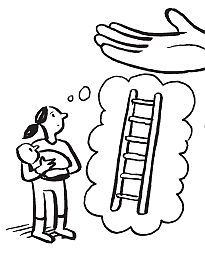Children should be at the heart of the SDGs

This joint report presents the case for placing children, aged 0–18 years, at the centre of the SDGs: at the heart of the concept of sustainability and our shared human endeavour. Wealthy countries generally have better child health and development outcomes, but their historic and current greenhouse gas emissions threaten the lives of all children. The ecological damage unleashed today endangers the future of children’s lives on our planet, their only home. As a result, our understanding of progress on child health and wellbeing must give priority to measures of ecological sustainability and equity to ensure we protect all children, including the most vulnerable. This is evident in Ireland's ranking in the report. In terms of child flourishing we rank fifth, however in terms of sustainability and implementing our commitments in terms of the SDGs we rank 154th. The results imply Ireland has a long way to go to meet the aims of Agenda 2030.
Main findings:
- The report finds that SDG monitoring needs a strong boost in investment to bridge the large data gaps in key indicators. This echoes the findings of our Sustainable Progress Index 2020 released on Friday which noted that data data coverage across the 17 goals is unequal.
- To ensure our children grow and flourish, we require timely and accurate population data on health, nutrition, educational access and performance, housing, and environmental security, among other entitlements.
- Economic development, concerted international action, and political commitment have brought about rapid change. In many ways, now is the best time for children to be alive, but economic inequalities mean benefits are not shared by all, and all children face an uncertain future. Climate disruption is creating extreme risks from rising sea levels, extreme weather events, water and food insecurity, heat stress, emerging infectious diseases, and large-scale population migration.3 Rising inequalities and environmental crises threaten political stability and risk international conflict over access to resources.
- Environmental harm to children now and in the future is intimately linked to our economic structures and commercial activity.
- The evidence is clear: early investments in children’s health, education, and development have benefits that compound throughout the child’s lifetime, for their future children, and society as a whole. Successful societies invest in their children and protect their rights, as is evident from countries that have done well on health and economic measures over the past few decades.
- Decision makers need a long-term vision. Just as good health and nutrition in the prenatal period and early years lay the foundation for a healthy life course, the learning and social skills we acquire at a young age provide the basis for later development and support a strong national polity and economy. High-quality services with universal health-care coverage must be a top priority. The benefits of investing in children would be enormous, and the costs are not prohibitive: an analysis of the SDGs suggests a financing gap of US$195 per person.
These findings echo those of ‘Measuring Progress: Sustainable Progress Index 2020’published by Social Justice Ireland on 21st February. This report finds that Ireland performs well on just two SDGs: Quality Education (SDG 4) and Peace and Justice (SDG 16). Ireland performs poorly on on Affordable and Clean Energy (SDG 7), Responsible Consumption and Production (SDG12), Climate Action (SDG 13), and Life below Water (SDG 14). We only score in the middle for No Poverty (SDG 1), Zero Hunger (SDG 2), Good Health and Well Being (SDG 3), Reduced Inequalities (SDG 10) and Genery Equality (SDG 5). This should be a cause of concern and we should aim to be among the top performers on all of these SDGs.
To quote the WHO-UNICEF-LANCET report:
"Concern for future generations is already at the centre of the SDG endeavour. In 2015, the world’s governments adopted 17 SDGs, with 169 targets to achieve by 2030. The SDGs convey a dual vision: to protect our planet from a dangerous and uncertain future and to ensure that we deliver secure, fair, and healthy lives for future generations. Children are at the heart of this vision, with their own needs, rights, perspectives, and contributions. They are the bridge to the future, and they demand our commitment and accountability. Children are also the most vulnerable to the lifelong environmental effects caused by climate change arising from anthropogenic greenhouse gas emissions, and from industry-linked pollution of the air, water, and land. Fundamentally, the SDGs are about the legacy we bequeath to today’s children. For that reason alone, children should be placed at the centre of the SDG endeavour. The SDGs are the agreed-upon global framework for working in the present to leave a legacy of a healthy, sustainable planet and future for our children".
This should guide policy making in terms of the SDGs and in terms of how we frame our investment not just in policies, but in current and future generations.